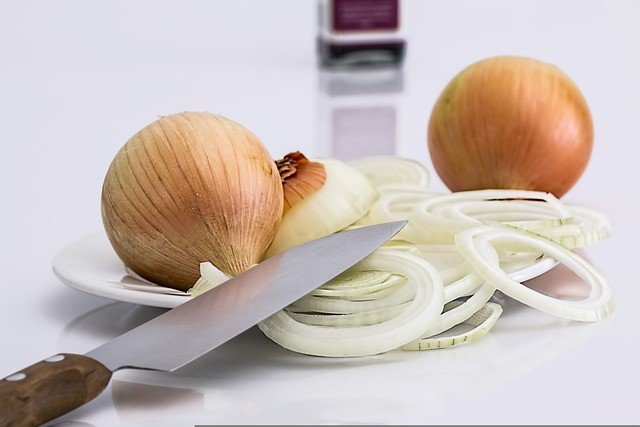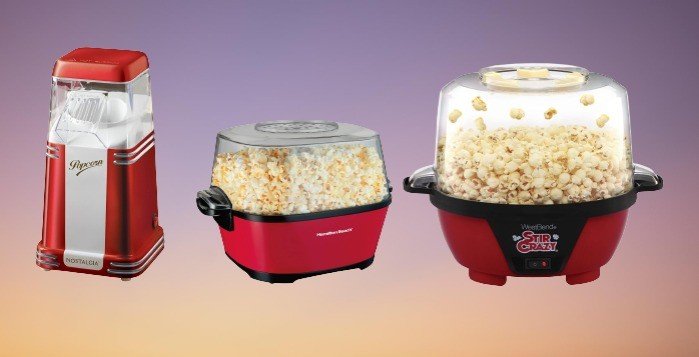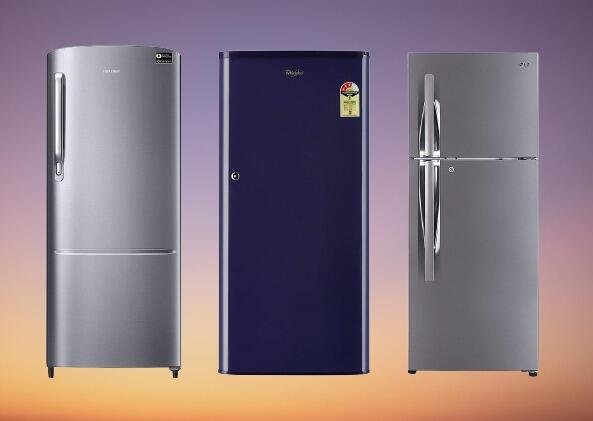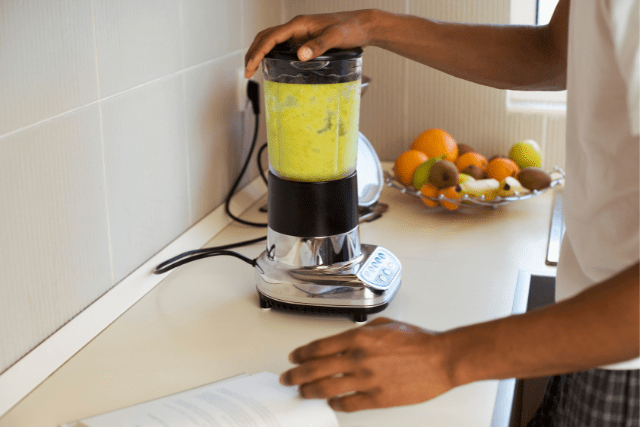If you’re looking for a comprehensive guide on kitchen knives, you’ve come to the right place. In this article, we’ll go over everything you need to know about choosing, using, and caring for your kitchen knives.
Introduction: Kitchen Knife
A kitchen knife is a knife used for food preparation. While much of this work can be accomplished with a few general-purpose knives—notably a large chef’s knife, a tough cleaver, and a small paring knife—there are also many specialized knives that are designed for specific tasks.
Knives are made with either a single-edged or double-edged blade, and either a straight or serrated edge. Kitchen knives can be made from several different materials, including carbon steel, stainless steel, ceramic, and titanium.
It’s hard to imagine a kitchen without knives. They’re one of the most essential tools in any cook’s arsenal, and there are so many different types to choose from. Whether you’re a professional chef or a home cook, it’s important to have a few good kitchen knives on hand.
The Kitchen Knife Buying Guide
There are many different types of kitchen knives available on the market, from basic paring and utility knives to more specialized options like boning and Santoku knives. With so many choices, it can be tough to know where to start when purchasing new kitchen knives. This guide will help you understand the different types of knives available and how to choose the best ones for your needs.

Types of kitchen knives
Kitchen knives come in all shapes and sizes, each designed for a specific purpose. The most common types of kitchen knives are listed below.
1. A Chef’s Knife
A chef’s knife is the most important knife in your kitchen and should be used for most tasks. The blade is typically eight inches long and made of high-carbon stainless steel. The handle is usually made of wood or plastic and has a full tang, which means the blade extends all the way to the end of the handle.
A chef’s knife can be used for slicing, dicing, and mincing meats, vegetables, and herbs. It can also be used to chop nuts and garlic. When shopping for a chef’s knife, look for one that feels comfortable in your hand and is well-balanced. A good chef’s knife will last you a lifetime if it is properly cared for.
2. A Paring Knife
A paring knife is a kitchen knife that is used for more delicate tasks, such as peeling and slicing fruits and vegetables. Paring knives typically have a blade that is 3 to 4 inches long, making them smaller and more maneuverable than other types of kitchen knives.
When choosing a paring knife, look for one with a comfortable grip and a sharp, sturdy blade. A good paring knife will make prep work quicker and easier, and can even be used for tasks like opening jars and removing stubborn labels.
3. A Bread Knife
A bread knife is a kitchen staple for anyone who loves to bake. This serrated knife is essential for slicing bread and other baked goods. A bread knife can also be used to carve meat or chop vegetables.
Bread knives have a serrated edge that helps to slice through tough crusts without crushing the soft interior of the bread. When choosing a bread knife, look for one with a comfortable grip and a blade that is the right size for your needs.
4. A Carving Knife
A carving knife is a kitchen tool that is perfect for carving meats such as roast chicken or turkey. This long, thin knife can easily slice through meat without tearing it, making it a great choice for those who want to create beautiful and evenly-sliced pieces of meat.
Carving knives are often used in professional kitchens, but they can also be a great addition to any home cook’s kitchen arsenal. If you’re looking for a versatile knife that can help you create restaurant-quality dishes, then a carving knife is a must-have.
5. A Serrated Knife
A serrated knife is a great option for bread and tomatoes. The serrated edge is ideal for slicing through tough crusts and delicate flesh. The teeth on the blade make it easy to create even slices.
Tomatoes can also be difficult to slice with a regular kitchen knife. The serrated edge of a knife helps to easily cut through the skin without squishing the tomato. This is the ideal way to get perfectly sliced tomatoes for sandwiches and salads.
6. A Utility Knife
A utility knife is a type of kitchen knife that is designed for general purpose use. It is smaller and lighter than a chef’s knife, making it more maneuverable and easier to control. Utility knives are ideal for tasks such as peeling and coring fruit, as well as slicing meat and vegetables.
While utility knives can be used for a variety of tasks, they are not meant for heavy-duty chopping or slicing. If you find yourself using your utility knife for these sorts of jobs on a regular basis, it may be time to invest in a more durable blade.
7. A Boning Knife
A boning knife is a slender, sharp knife that is used to remove bones from raw meat and poultry. These knives are designed to get in close to the bone, and their long, thin blades make them ideal for precision work.
Boning knives are an essential tool for any home cook who likes to prepare their own meat and poultry. While these knives can be used for other tasks, such as slicing vegetables, they really shine when it comes to breaking down raw meat.
8. A Slicing Knife
When it comes to slicing meat, a slicing knife is the best option. This type of knife is designed specifically for slicing roast beef and other roasts. It is long and thin, with a sharp point that makes it easy to get nice, even slices.
If you don’t have a slicing knife, you can use a chef’s knife or a utility knife, but they won’t give you the same results. A slicing knife is the best tool for the job, so if you do a lot of cooking at home, it’s worth investing in one.
9. A Cleaver
When it comes to kitchen knives, a cleaver is essential for chopping through meats and bones. This type of knife is typically heavy and has a thick blade with a sharp, straight edge. When using a cleaver, it’s important to use a cutting board that can withstand the weight and force of the knife.
If you’re looking for a versatile knife that can handle anything from meat to vegetables, then a cleaver is the right choice for you.
10. A Fillet Knife
A fillet knife is a great option for those looking to cut fillets from fish and meat. This type of knife is designed with a thin, flexible blade that is ideal for slicing through delicate flesh. Additionally, the sharpness of a fillet knife ensures clean cuts with minimal effort. For those who frequently prepare fish or seafood dishes, a fillet knife is an essential tool to have in the kitchen.
Blade material
The most important factor to consider when buying kitchen knives is the type of steel used in the blade. There are four main types of steel used in knife making: carbon, stainless, tool, and high-carbon stainless. Each type has its own advantages and disadvantages that make it suitable for different applications.
Carbon steel is the traditional choice for kitchen knives. It is tough and durable, with a sharpness that can be easily maintained. However, it is also more susceptible to rust than other types of steel.
Stainless steel is the most popular choice for kitchen knives today. It is resistant to rusting and staining and holds an edge well. However, it is not as tough as carbon steel and can be more difficult to sharpen.
Tool steel is a type of stainless steel that is designed for durability and resistance to wear. It is often used in industrial applications such as cutting tools or drill bits.
High-carbon stainless is a type of steel that contains a higher amount of carbon compared to other types of stainless steel. This makes it more durable and resistant to corrosion. It is also able to retain its edge for a longer period of time, making it a popular choice for kitchen knives. However, high-carbon stainless steel is more difficult to sharpen than other types of steel, so it is important to know how to properly care for your knives.
Handle material.
Handle material is an important consideration. There are a few different materials commonly used for knife handles, each with its own advantages and disadvantages.
Wooden handles are attractive and provide a good grip, but require more care than other materials. They can absorb moisture and bacteria, so they need to be cleaned and dried thoroughly after each use. Wooden handles can also crack or chip over time.
Plastic or composite handles are durable and easy to care for but can feel slippery in the hand. They may also become stained or discolored with extended use.
Metal handles offer the best durability, but can be cold to the touch and difficult to grip when wet. They also require the most care to avoid rusting or tarnishing.
Weight and balance
Weight and balance are two important factors to consider when purchasing a kitchen knife. A heavier knife will be more difficult to control, but will also be more durable. A well-balanced knife will feel more comfortable in your hand and will be easier to control.
When choosing a kitchen knife, it is important to hold the knife in your hand to get a feel for the weight and balance. Heavier knives are more durable but can be difficult to control. Balanced knives are more comfortable to hold and easier to control.
If you are unsure about which knife to purchase, it is best to consult with a professional chef or someone who is experienced with kitchen knives. They will be able to help you choose a knife that is the right weight and balance for your needs.

How to clean kitchen knives?
Most people don’t think about cleaning their kitchen knives on a regular basis, but it’s actually really important to do so. Here are a few tips on how to clean your kitchen knives:
1. Use hot, soapy water.
When it comes to cleaning your kitchen knives, hot soapy water is your best friend. This will help to remove any food particles that may be stuck to the blade and keep your knives looking and performing their best. Be sure to rinse the knives thoroughly after washing them in hot soapy water to avoid any soap residue build-up on the blade.
2. Use a soft cloth or sponge to avoid damaging the blade.
If you’re going to clean your kitchen knives by hand, be sure to use a soft cloth or sponge. You don’t want to damage the blade by using something too abrasive.
Wash the knife with warm water and soap, then dry it off with a clean towel. If there are any stubborn spots, you can use a mild cleaning solution. Be sure to rinse the knife well afterward.
Once your knife is clean, store it in a safe place where it won’t come into contact with other items and get nicked or scratched.
3. Don’t forget to clean the handle as well.
Don’t forget about the handle! This is where a lot of bacteria can build up, so it’s important to give it a good cleaning every now and then. Here’s how:
First, remove the handle from the knife. If it’s a removable handle, simply unscrew it and set it aside. If it’s not removable, you’ll need to be extra careful when cleaning to avoid damaging the knife.
Next, using a cloth or brush, scrub the handle with soap and water to remove any dirt or grime. Pay special attention to any crevices or grooves where dirt might be hiding.
Once the handle is clean, dry it off completely before reattaching it to the knife. And that’s all there is to it!
4. Dry your knife thoroughly after cleaning it.
It is important to dry your knife thoroughly after cleaning it, as this will help to prevent rust. Rust can damage the blade of your knife and make it less effective. If you are not able to dry your knife immediately after cleaning it, you can store it in a dry place until you are able to do so.
=> Use a mild abrasive cleaner for stainless steel knives.
If you have stainless steel knives, you can use a mild abrasive cleaner to remove any stubborn stains. First, wet a clean cloth with the cleaner and then gently rub the stain in a circular motion. If the stain persists, you can try using a toothbrush or other soft-bristled brush to scrub it away. Remember to rinse the knife well after cleaning it and dry it with a clean towel.
=> Avoid using dishwashers for knives.
For best results, wash your knives by hand with mild soap and warm water. To prevent water spots, immediately dry them after washing them. If you must put them in the dishwasher, use a low-heat setting, and don’t leave them in there for too long. Dishwashers can be tough on knives and can cause them to become dull over time. Plus, hand-washing your knives will help them last longer.
Why is having sharp knives important?
Sharpness is the key. A sharp knife will make quick work of any cutting task, whether you’re chopping vegetables or slicing meat. Here are a few reasons to have sharp knives in your kitchen:
Sharp knives make prep work easier.
Whether you’re chopping vegetables or slicing meat, a sharp knife will make the job quicker and easier. Dull knives require more force to use, which can lead to fatigue and even accidents.
Sharp knives help to prevent accidents.
Cutting with a dull knife is more likely to cause an accident than using a sharp one. This is because you need to apply more pressure to make the blade cut through whatever you’re slicing, and there’s a greater chance that it will slip. A sharp knife requires less force to use, so there’s less chance of it slipping and causing an injury.
Sharp knives make food look better. When you’re slicing vegetables or meat, a sharp knife will give you clean, even cuts that look much nicer than if you were using a dull knife.

The best way to sharpen your knives
Sharpening your knives is an important task to keep them in good condition. This will help prolong their lifespan and keep them working well for longer. Here are a few ways to sharpen your knives:
Use a sharpening stone.
Wet the stone with water and then hold the knife at a 20-degree angle against the stone. Sharpen the blade by moving it back and forth across the stone in a sweeping motion. Be sure to maintain the same angle throughout the entire process.
Use a honing rod.
Wet the rod with water and then hold the knife at a 20-degree angle against the rod. Draw the blade down the length of the rod, from heel to tip, in a single smooth stroke. Be sure to maintain the same angle throughout the entire process.
Use sharpening steel.
When it comes to keeping your kitchen knives in top condition, sharpening steel is an essential tool. Also called honing steel, this long, slender rod is usually made of hardened steel and features a textured surface that can help to realign and straighten your knife’s edge.
To use a sharpening steel, first identify the bevel of your knife’s edge. Hold the steel in your dominant hand and the knife in your other hand, with the blade pointing away from you. Rest the blade on the steel at a 20-degree angle and apply gentle pressure as you draw the blade down the length of the steel (away from yourself). Repeat this motion 5–10 times on each side of the blade.
=> Remember to always use caution when handling sharp objects!
It’s important to always use caution when handling them. Sharp objects can easily cause cuts and other injuries, so it’s important to be careful when using them. Always grip them firmly and be aware of where your fingers are in relation to the blade.
Be extra careful when cutting tough or chewy foods. These can require more pressure to cut through, which increases the risk of slipping.
=> Be careful not to over-sharpen your knife.
If you’re sharpening your kitchen knives by hand, be careful not to over-sharpen them. This can damage the blade and make it more likely to break. A good rule of thumb is to stop sharpening when you’ve removed the burr from the edge of the blade.
If you’re using an electric knife sharpener, be sure to follow the manufacturer’s instructions carefully. Some sharpeners can easily damage blades if they’re used incorrectly.
=> Always test the edge of the blade on a piece of paper or cardboard before using it on food.
A dull knife is not only dangerous, but it’s also one of the most frustrating things in the kitchen. Not only does it make prep work take twice as long, but it can also be dangerous. A dull knife is more likely to slip and cause an accident.
That’s why it’s important to always test the edge of the blade on a piece of paper or cardboard before using it on food. This will help ensure that the blade is sharp enough to safely use on whatever you’re cutting.
4. Use a professional when needed, especially for high-dollar knives.
There are a few instances where it is worth it to spend the extra money on a professional knife. If you are looking for a top-of-the-line knife that will last a lifetime, it is worth it to consult with a knife expert. They can help you select the perfect knife based on your needs and budget.
Another time when it is worth spending more on a professional knife is when you are needing a specialty knife, such as one for sushi preparation. Sushi knives are very sharp and require regular maintenance, so it is best to leave them to the experts.
How to store your knives
When it comes to storing your knives, there are a few things to keep in mind. First, you’ll want to make sure that the knives are stored in a safe place where they won’t become dull or damaged. Second, you’ll want to keep them organized so that you can easily find the right knife for the job. And finally, you’ll want to keep them clean and dry to prevent rust.
Here are a few tips for storing your knives:
Keep them in a knife block.
A knife block is a great way to store your knives safely and securely. By keeping them in a block, you can avoid accidental cuts and keep your fingers safe. Plus, it helps to keep your countertop looking neat and tidy.
Here are a few things to keep in mind when choosing a knife block:
Size: Make sure to choose a block that will fit all of your knives. If you have a large collection, you may need more than one block.
Material: Wood is the most popular option for knife blocks, but plastic and metal are also available. Choose a material that matches your kitchen décor.
Weight: Heavier blocks are less likely to tip over, so they’re ideal if you have small children in the home.

Wrap them in a towel.
If you don’t have a knife block, you can wrap your knives in a towel or cloth. This will protect your knives from getting damaged and will also keep them from slipping and sliding around. To do this, simply fold the towel or cloth in half and then place the knives inside. Be sure to wrap the handles as well so that they are protected.
How to cut food safely with a kitchen knife?
Every tool is designed for good but if don’t use it wisely, it may cause accidents. The same is the case with kitchen knives. Strictly adhere to the following points. This will help you to cut food safely with a kitchen knife.
Start with a sharp knife.
No matter what you’re cutting, starting with a sharp knife is always the best way to go. A sharp knife will make the job easier and help you avoid accidents.
Use a cutting board.
A cutting board is a vital tool in any kitchen, whether you’re a professional chef or a home cook. They come in all shapes and sizes, but there are a few things to keep in mind when choosing the right one for your needs.
The first thing to consider is the material. Cutting boards can be made from wood, plastic, bamboo, or even glass. Each has its own benefits and drawbacks, so it’s important to choose the right one for your needs. Wood cutting boards are often preferred by professional chefs because they’re durable and gentle on knives.
Plastic boards are a good choice for those who are looking for an inexpensive option that is easy to clean and maintain. Bamboo boards are becoming increasingly popular because they’re eco-friendly and offer a similar look and feel to wood cutting boards.

Keep your fingers out of the way.
When using a kitchen knife, it is important to keep your fingers out of the way. Hold the handle of the knife tightly with your index finger and thumb. The other fingers should be curled around the handle. Keep your fingers close to the blade when cutting. This will help you maintain control of the knife and prevent accidents.
Slice, don’t chop.
There are many different techniques that can be used when cutting food. The slicing motion is one of the most common and versatile. When slicing, it is important to keep the blade at a consistent angle and to use a sawing motion. This will help to ensure that the food is cut evenly and smoothly.
One of the benefits of slicing instead of chopping is that it can help to prevent injuries. When chopping, there is a greater chance of the knife slipping and causing cuts or scrapes. However, when slicing, the blade is less likely to slip because it is moving in a consistent motion. Additionally, slicing requires less force than chopping, so there is less chance of injuring yourself with the knife.
Slicing can also be faster than chopping because you can make longer strokes with the knife. This is especially helpful when cutting larger pieces of food.
Use a sawing motion.
When cutting with a kitchen knife, it is important to use a sawing motion rather than a chopping motion. This will help to prevent the knife from slipping and injuring you. Hold the food item in one hand and the knife in the other. Place the blade of the knife against the food and then move your hands back and forth, as if you were sawing through a piece of wood.
Don’t put your knife down until you’re done.
A good rule of thumb in the kitchen is to never put your knife down until you’re done. This can help you avoid accidents and keep your work area clean.
If you’re cutting vegetables, for example, it’s best to finish the entire batch before setting your knife down. That way, you can focus on the task at hand and avoid any potential hazards. The same goes for chopping meat or slicing bread.
It may seem like a small thing, but always keeping your knife in hand can make a big difference in the kitchen. So next time you’re cooking, remember: don’t put your knife down until you’re done.
Conclusion
It is important to have the right kitchen knives in order to make food preparation easier and more enjoyable. With the right tools, you can make quick work of even the most daunting tasks. This guide has hopefully helped you to understand the different types of knives available and how to select the ones that are right for you. With a little practice, you’ll be chopping, slicing, and dicing like a pro in no time.







